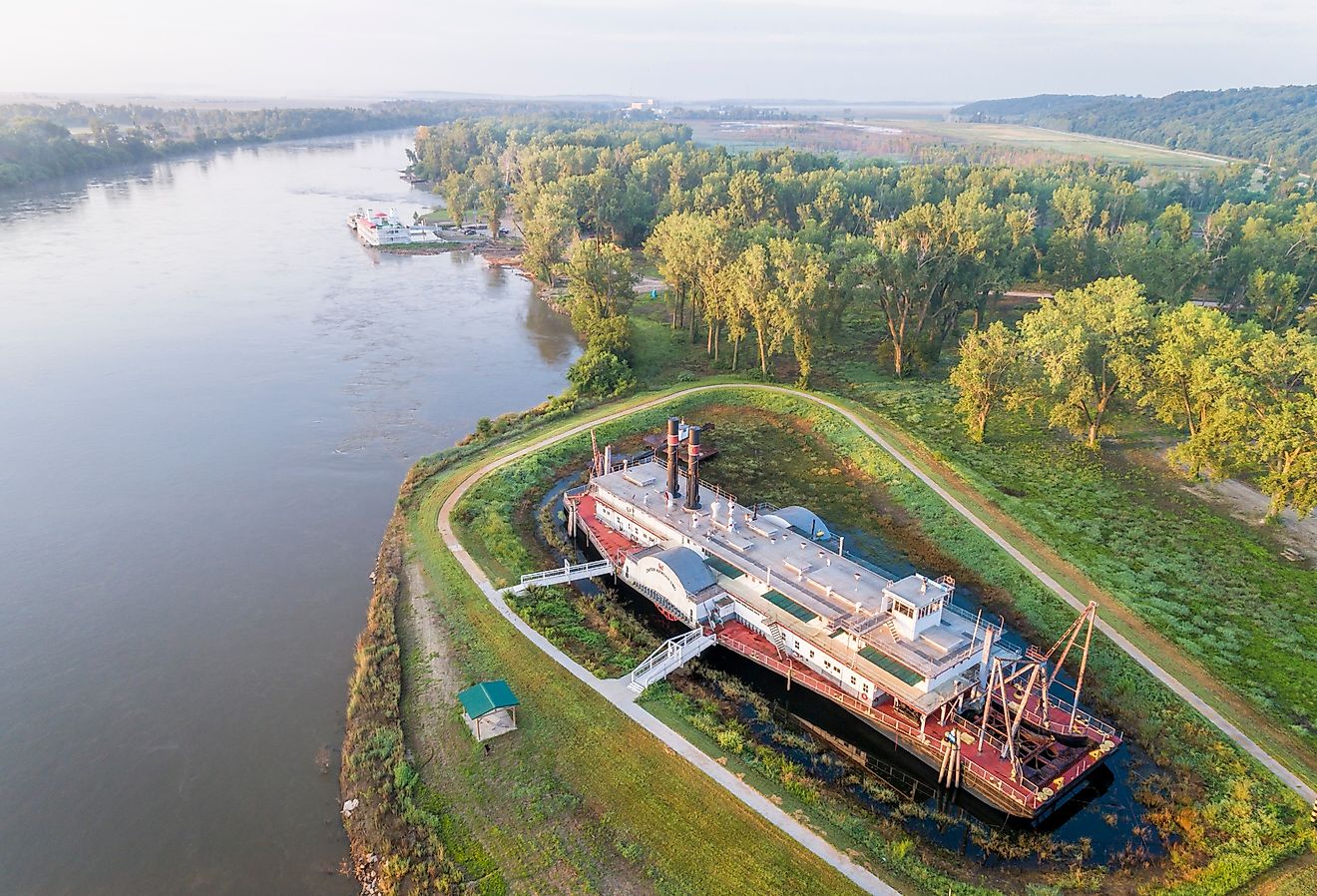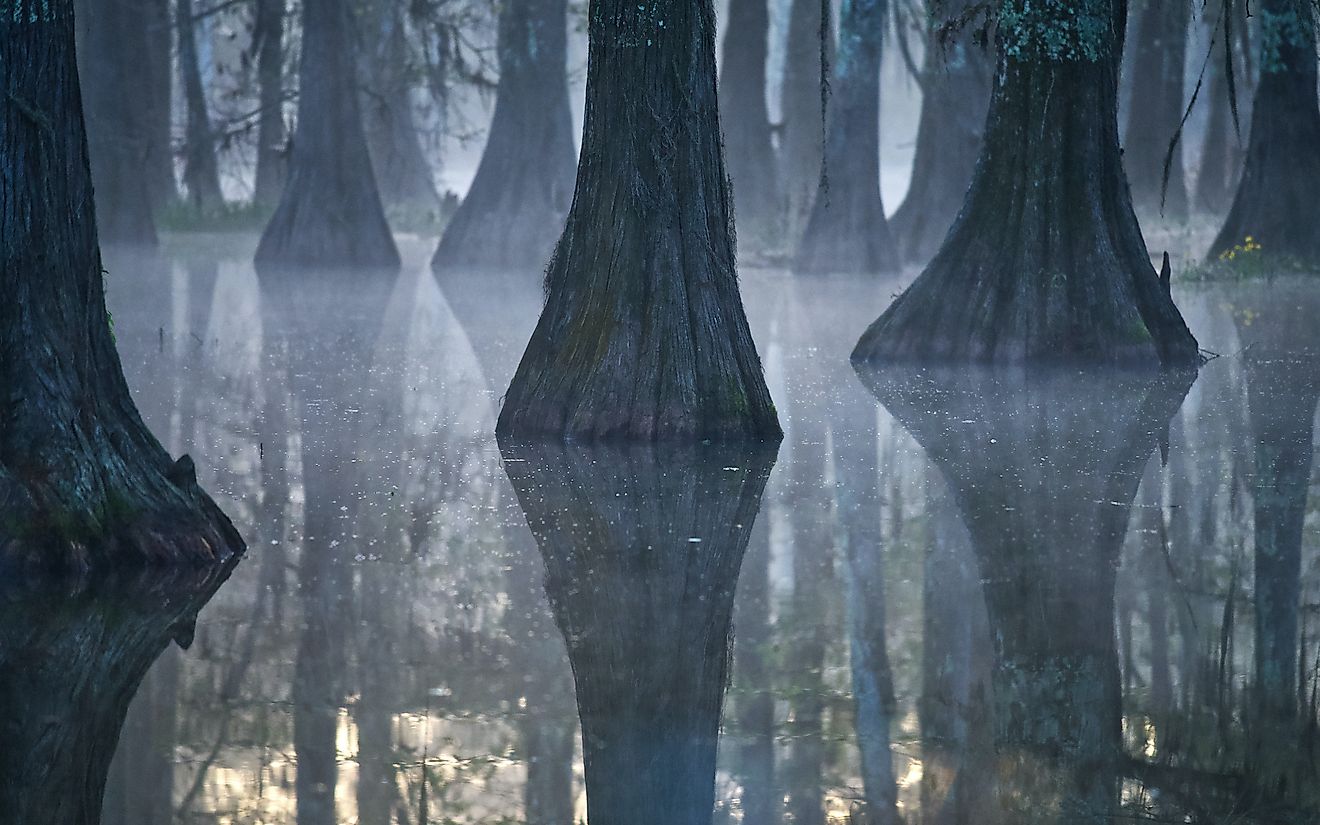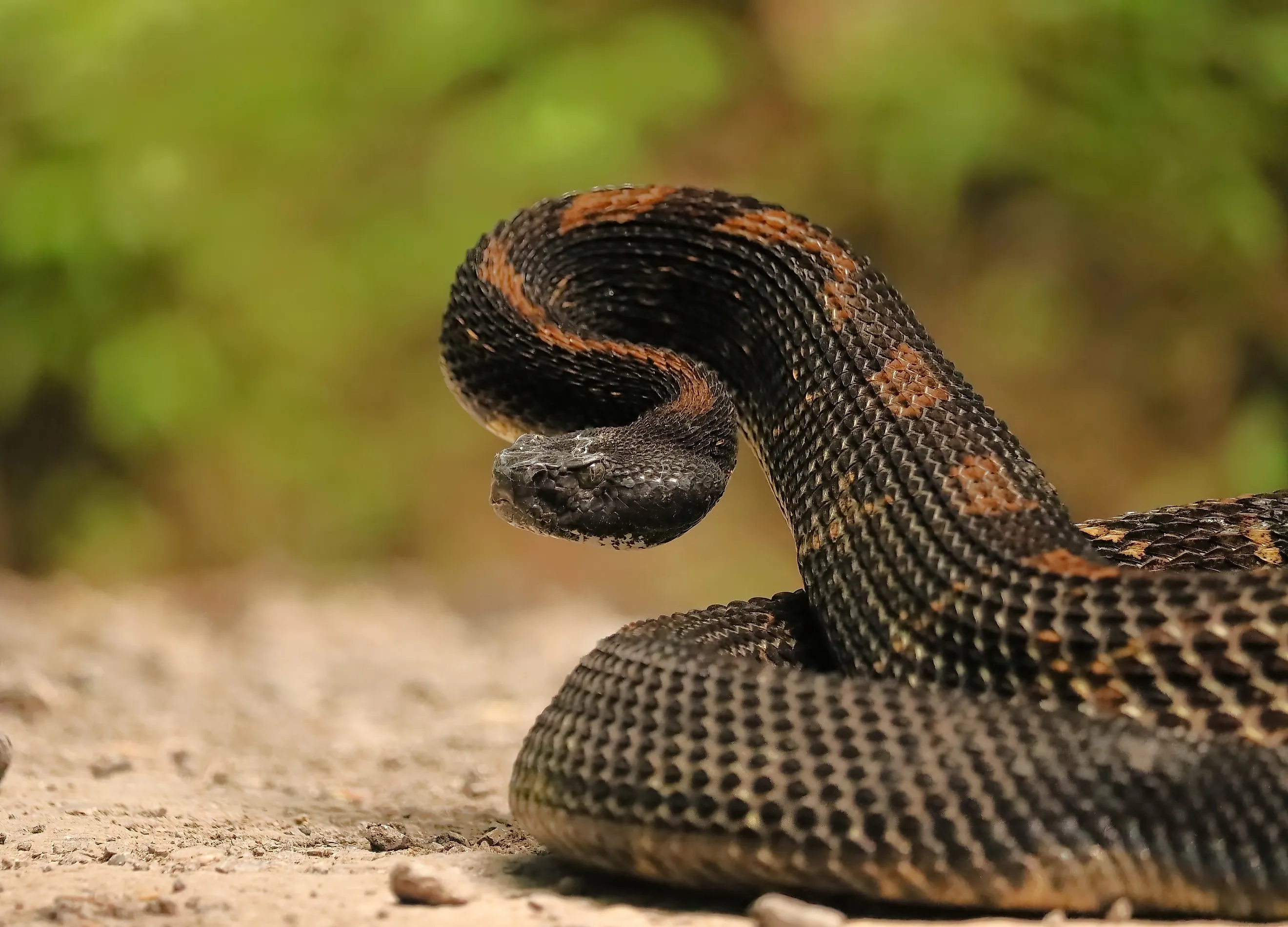
7 Snake Infested State Parks In Tennessee
In Tennessee, snakes can be spotted near hiking trails, vegetation, and waterfalls. From the outcrops of the Cumberland Plateau to the backwaters of West Tennessee, these reptiles are essential for controlling rodent populations and conveying the ecosystem's general health. The opportunity to see a snake comes with the reminder that there are many fierce predators in the Big Bend State, and it serves as a warning to be careful when visiting the state's parks.
Along with dozens of non-venomous snake species like rat snakes, watersnakes, garter snakes, and kingsnakes, Tennessee is home to four dangerous snake species: timber rattlesnakes, copperheads, cottonmouths, and pygmy rattlesnakes. Although snakes are found all over the state, several parks are particularly well-known for frequent snake encounters due to their topography, climate, and large population of prey.
South Cumberland State Park
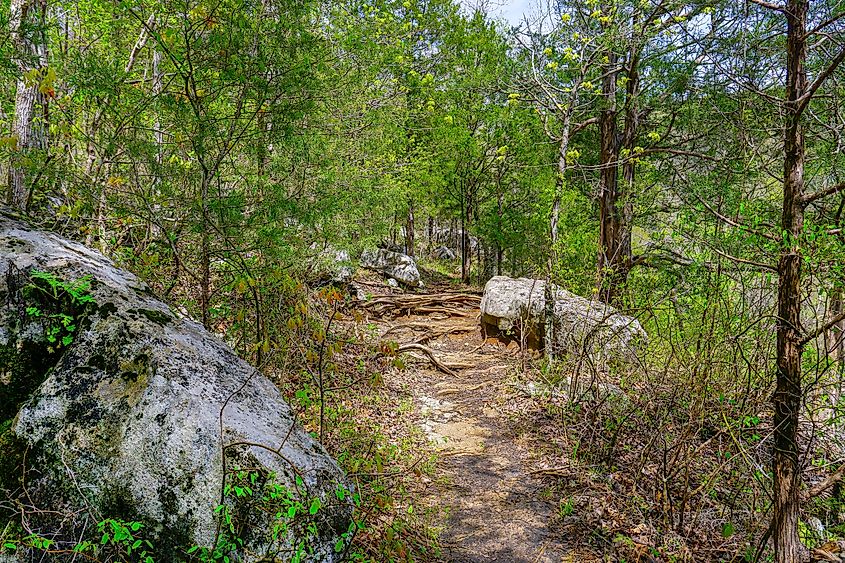
South Cumberland State Park, one of Tennessee’s most rugged and scenic protected areas, spans multiple sections of the Cumberland Plateau and offers miles of rocky overlooks, deep gorges, and forested trails, all ideal habitat for snakes. The park is well-known for its population of timber rattlesnakes, which rangers have commonly stated can be found all over the park, particularly in sun-warmed rocky areas and ledges.

Along the popular Fiery Gizzard Trail, hikers frequently report sightings of rattlesnakes, green snakes, and other native species, though most encounters are non-aggressive and the snakes typically avoid human contact. Visitors should remain vigilant across the diverse terrain while acknowledging the vital role these reptiles play in the ecology, as Tennessee's snake fauna includes copperheads, cottonmouths, and pygmy rattlesnakes in addition to the park's well-known rattlesnakes.
Cumberland Mountain State Park
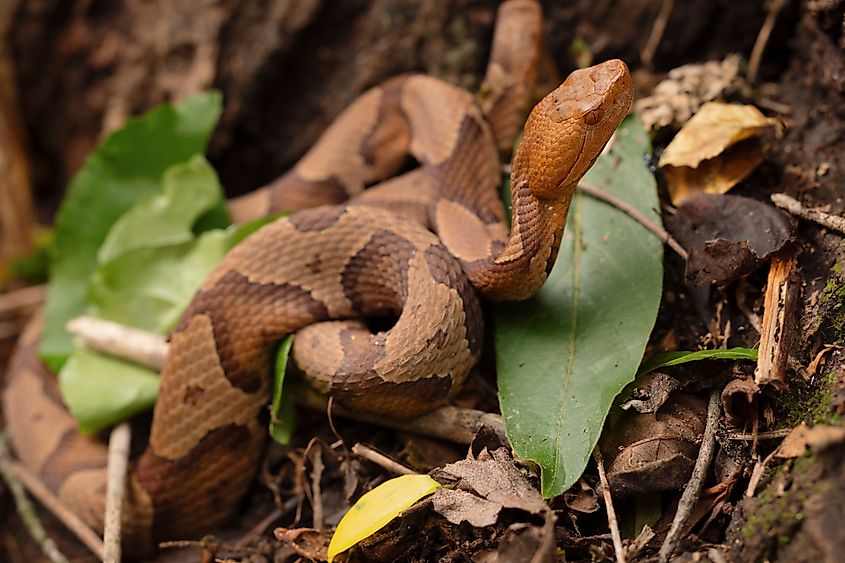
Snakes thrive on the steep hills, thick hardwood forests, and sunny clearings found in Cumberland Mountain State Park. Although formal species inventories for the park are limited, regional herpetology guides and visitor observations confirm that the area supports timber rattlesnakes and copperheads, the two primary venomous species known to inhabit the northern Cumberland Plateau. These snakes prefer to hunt small mammals and lounge on warm rock surfaces on the park's bluff edges, forested slopes, and stone outcrops.
Big Ridge State Park
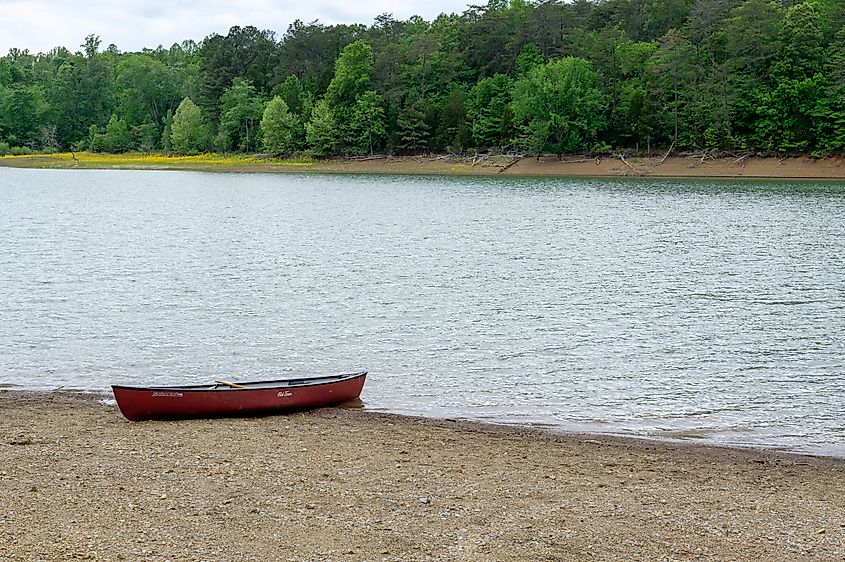
Big Ridge State Park in Union County is characterized by wooded ridges, narrow hollows, and a large, winding lake, making it a habitat that hosts a healthy variety of snake species. The park is active in snake education, hosting a “Snake Time!” ranger program that features live demonstrations and teaches visitors how to safely identify and coexist with local species.
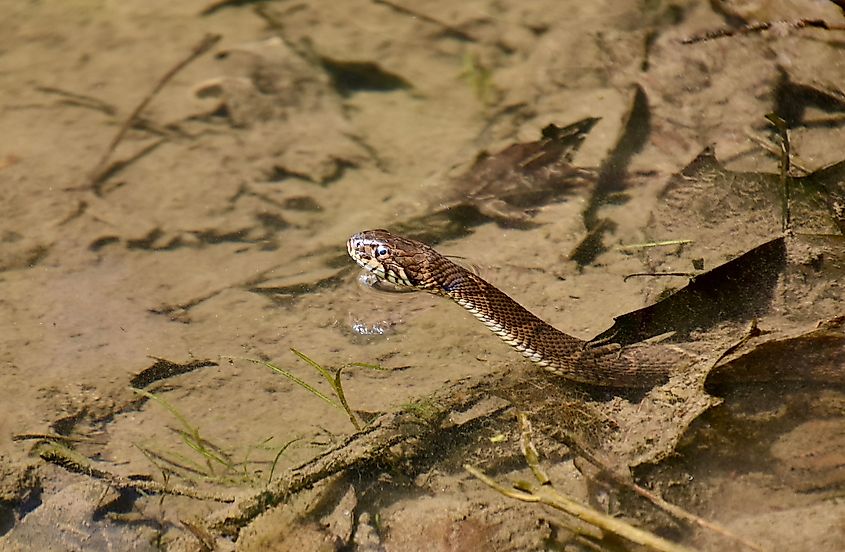
Along Big Ridge Lake and its feeder streams, observers frequently report non-venomous northern watersnakes, which thrive in the park’s clear, shallow waters. Big Ridge is a dependable location for sightings during the warmer months since the nearby trees and rocky slopes offer appropriate habitat for other common Tennessee snakes.
Norris Dam State Park

Numerous snake species can be found in Norris Dam State Park, which stretches along the forested shores of Norris Lake and features a mix of coves, rocky slopes, and shaded forest. While reptile-specific surveys for the park are limited, Norris Lake itself is widely noted for its abundant northern watersnakes, which are frequently seen basking on rocks, cruising along the shoreline, or hunting in shallow water.
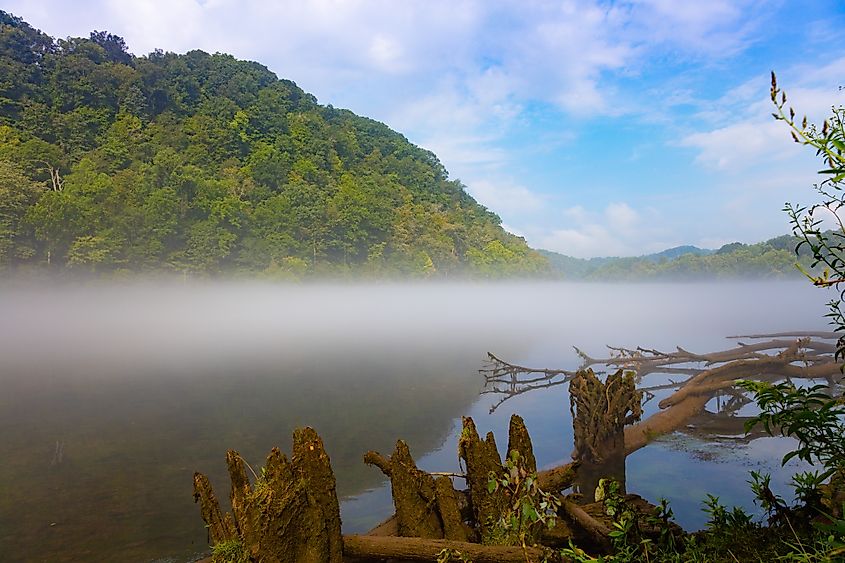
The park also lies within the Clinch River Basin, a region known to host copperheads and timber rattlesnakes, as well as non-venomous species like kingsnakes and black rat snakes, according to regional conservation data. With its blend of aquatic and upland habitats, Norris Dam State Park provides ideal conditions for both venomous and non-venomous snakes, making encounters possible for hikers, anglers, and paddlers alike.
Warriors’ Path State Park
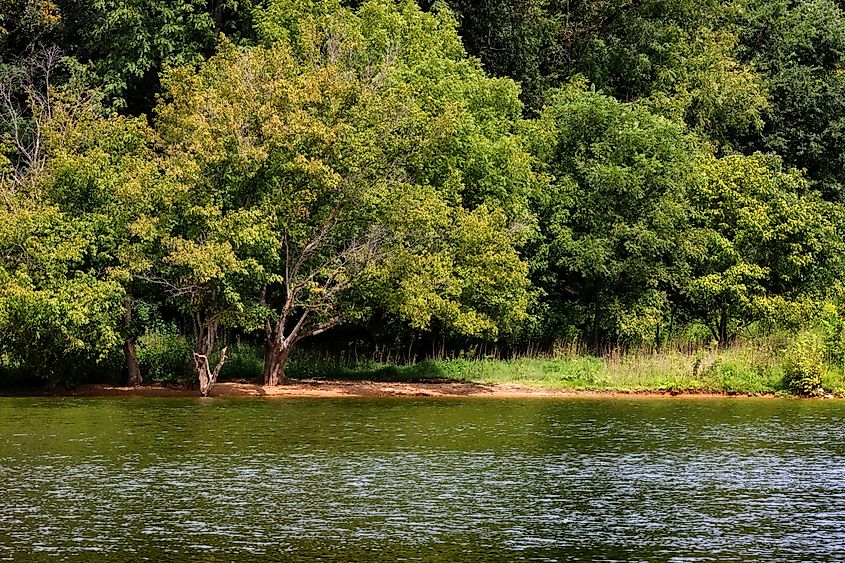
Warriors’ Path State Park, a 950-acre Tennessee State Park in Kingsport on the shores of the Patrick Henry Reservoir, offers wooded trails, a marina, disc golf, camping, horseback riding, and an 18-hole golf course. Because the Tennessee State Parks run an “East Tennessee Snakes” education program there, the park serves as an excellent place to learn about—and potentially encounter—native snake species.

The region falls within the range of pit vipers like copperheads and timber rattlesnakes, which inhabit the park’s rocky woods, riverside bluffs, and leaf-littered forest floors. Non-venomous snakes like garter snakes and northern watersnakes are also found in these parts. Visitors learn more about the natural history and ecological significance of these snakes through facilitated programs that include conservation messaging, help with identification, and live snake demonstrations.
Reelfoot Lake State Park
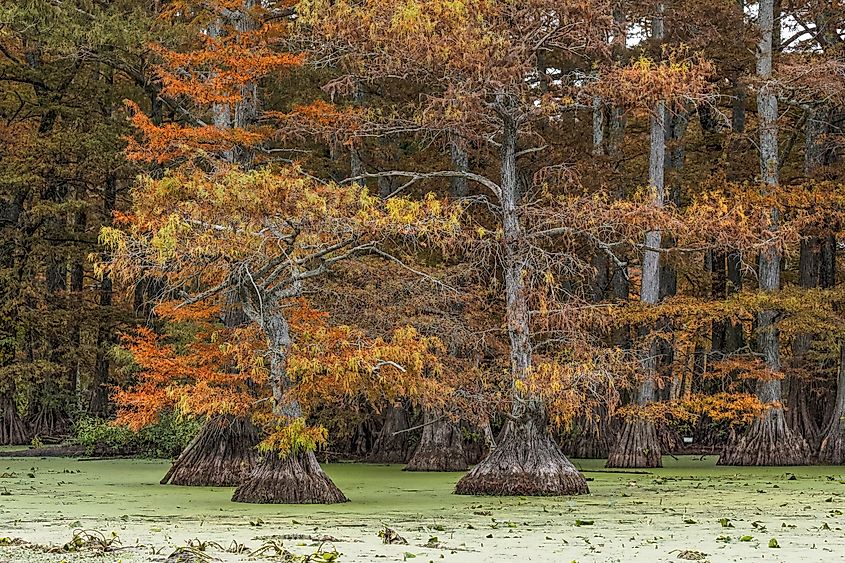
Reelfoot Lake State Park in northwest Tennessee is an ecologically rich and unique place. The lake spans about 10,900 acres of open water and marsh, surrounded by roughly 7,100 acres of bottomland hardwood and cypress swamp. Reelfoot Lake State Park is considered a major “snake hotspot,” particularly along its swampy, marshy shoreline, where the cottonmouth (water moccasin) is the primary venomous species.

The cottonmouth thrives in these aquatic environments, and local sources estimate that the lake supports around 30 snake species, though 98% are non-venomous. The Tennessee Wildlife Resources Agency confirms that cottonmouths inhabit the state’s western aquatic habitats. Within the park, both venomous cottonmouths and various nonvenomous water snakes are regularly observed, making it a rich site for snake diversity and education.
Fall Creek Falls State Park

Fall Creek Falls State Park in Tennessee is a sprawling natural area of more than 29,500 acres on the Cumberland Plateau, filled with rugged gorges, waterfalls, hardwood forests, and over 50 miles of trails. Copperhead snakes are commonly found along these trails.
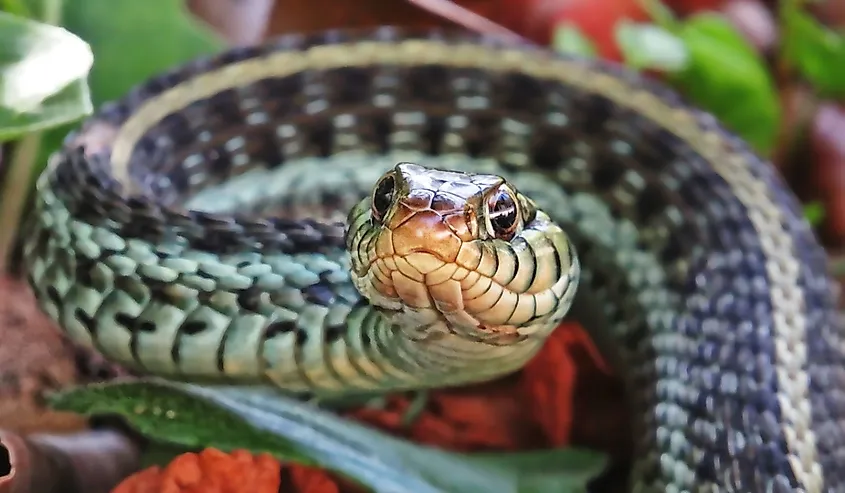
While copperheads are the venomous species most frequently encountered, visitors may also encounter non-venomous snakes, such as gray rat snakes, racers, and garter snakes. Copperheads are one of Tennessee’s pit vipers; they prefer forested areas with logs and leaf litter, and young copperheads use a bright yellow tail tip to lure prey.
Tennessee’s state parks are some of the most biologically rich landscapes in the Southeast. Visitors who have an understanding of the habitats, behaviors, and significance of these reptiles will have the opportunity to explore Tennessee's wild regions with confidence and respect. Hiking trails, canoeing through wetlands, or learning through ranger-led programs, these seven parks showcase the Volunteer State's incredible biodiversity and serve as a reminder that coexisting with snakes is part of what makes Tennessee's wilderness so diverse and intriguing.



